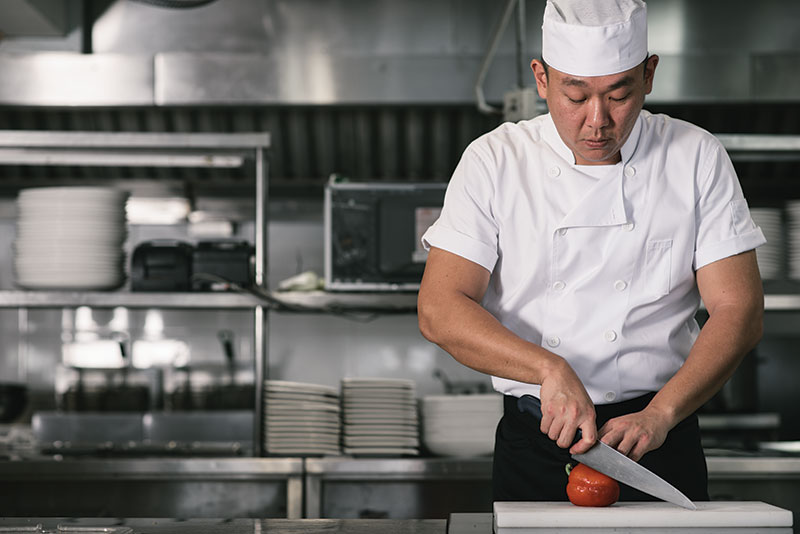An Interesting History of Chef Uniforms

Every aspect of the kitchen ranging from the positions to the origins of sauces comes from a story and has an important part to play when it comes to the rich history of cooking. The same can be said for chef workwear when first introduced by Marie-Antoine Carême in the mid-19th century, chef wear was meant primarily as a symbol of respect for accomplished chefs. And each piece of the uniform serves a specific purpose. If you’ve ever wondered why the hat is so tall or why the trousers have checkers, read on.
The Toque
Also known as the chef’s hat, the toque originates back to ancient times. Thousands of years ago in Assyria, poisoning was a common way for a person to rid himself of enemies. knowing of this problem, Assyrian royalty selected their cooks very carefully. They selected only their most loyal subjects to be chefs, sometimes even members of the royal family itself and made them members of the court. Having to care for the kings’ safety, chefs were paid lots of money and land, to deter the temptation of being bribed by the kings’ enemies. They were entitled to wear a crown of a similar shape to the royal family employing them, although made of cloth and lacking in jewels, resulting in the iconic chef workwear that we know of today.
There is one version of history when during the 16th century, artisans of all types were often imprisoned and sentenced to death, so to avoid this chefs sought refuge in the Church. They hid amongst priests of the monasteries, where they wore the same clothes as the priests including tall hats and robes. The only difference between chefs and priests were chefs’ uniforms were grey or white, and the priests' were black.
The Jacket
The double-breasted jacket workwear was portrayed in Marie-Antoine Carême’s 1822 illustration. The advantage of the unique wide-flapped jackets was that if the front of the jacket became soiled, the flaps could even be reversed with the dirty one hidden behind so to create a favourable appearance. In turn, the chef could wear a clean jacket for twice as long. In addition, there were two layers of protection from spills, splashes, heat, and steam.
The Apron
Aprons are to be worn over the jacket and midsection to protect the uniform as well as the chef. With chefs cooking and reaching over large flames, back then the apron is historically technical workwear as a safety precaution. Now it is worn to keep the uniform clean, protecting the jacket and pants from spills, scalds, or stains. In an 1892 London cookery class for apprentices, it stated “reversing the apron once is permissible and by adjusting the number of folds (over the waist string) stains can be hidden. The instructor, however, warned the chefs-to-be against making the apron ludicrously short by folding it excessively.
The Trousers
A chef’s trousers have a little checkered pattern, which is good for disguising the obvious stains which develop while working. In the west, the pattern is often a black and white houndstooth, while many chefs in Europe prefer a blue and white print uniform.
Conclusion
Even in this day and age, the chef’s uniform is still a symbol for cleanliness and professionalism. There’s a little piece of history in every chef coat and chef hat as modern-day fashions are still similar to the ones that originated more than 400 years ago. Since the 1980’s, non-traditional chef coats and chef attire have become increasingly popular. Many new workwear options include pinstriped pants, denim jackets, or novelty printed attire such as flags, pasta, and chilli peppers. Chefs can now express their individuality and enjoy comfort at the same time.
Enjoyed reading this blog? Follow and subscribe Wiz By Neptune to find out more and have great custom-made workwear deals!